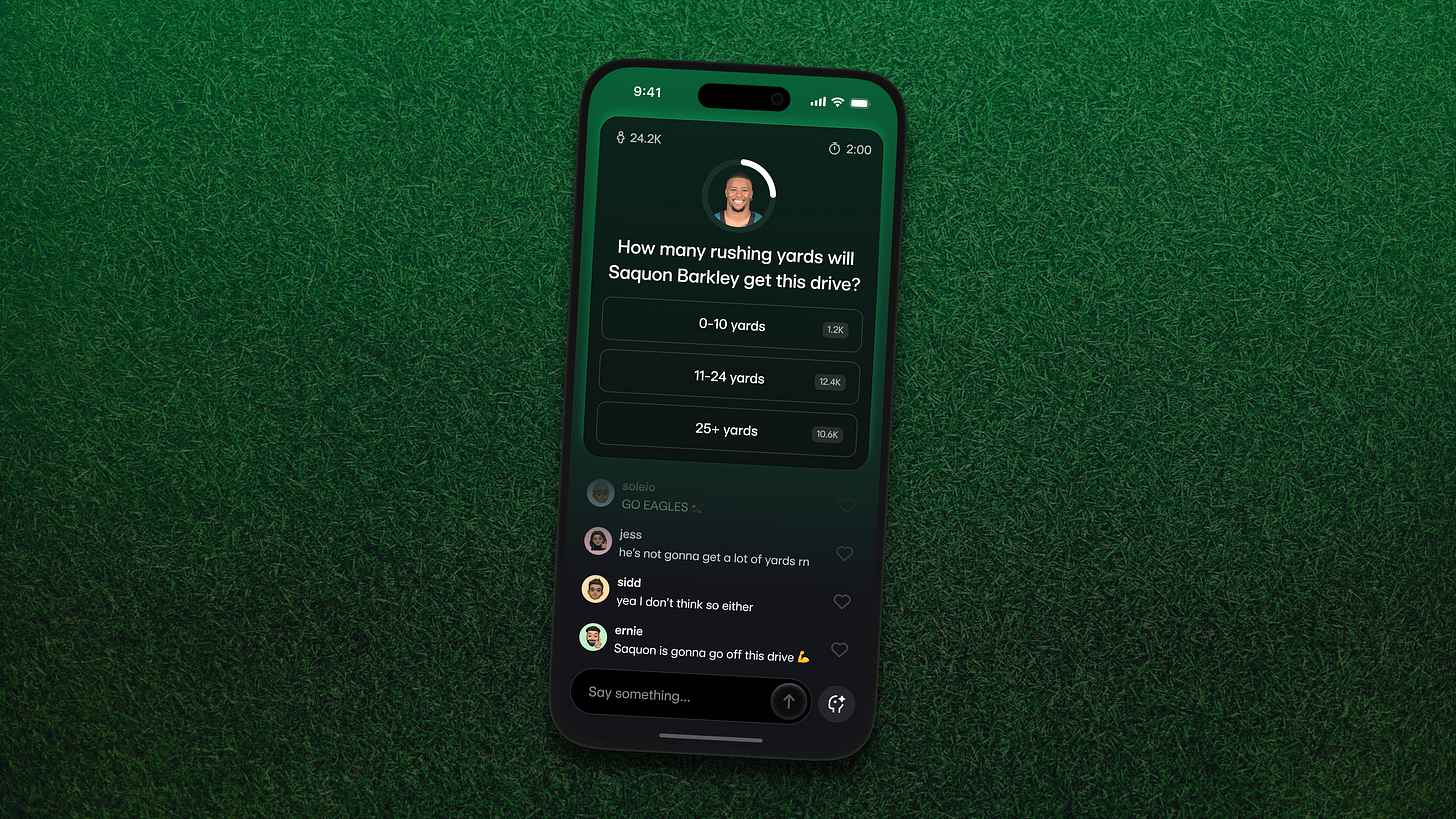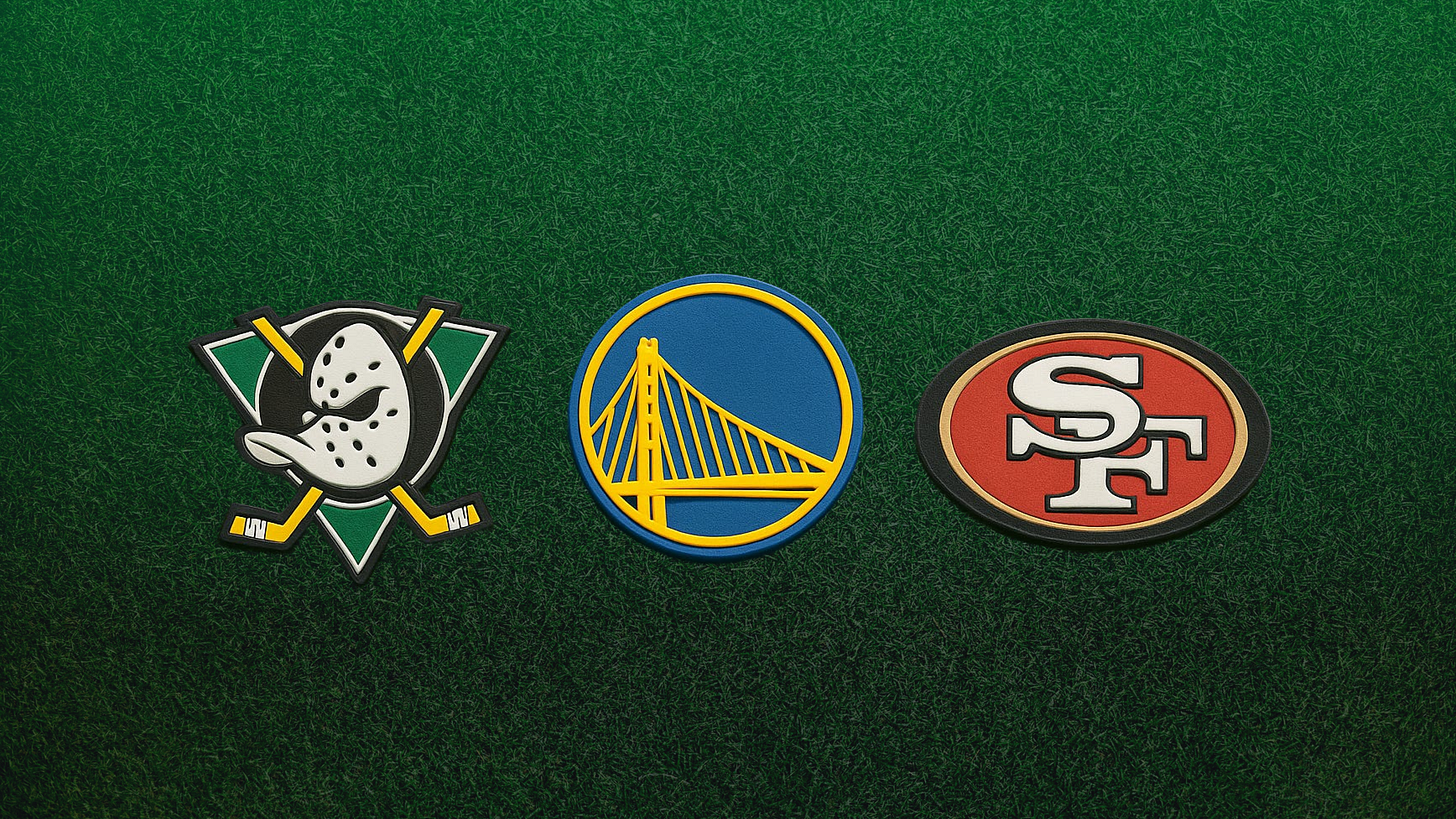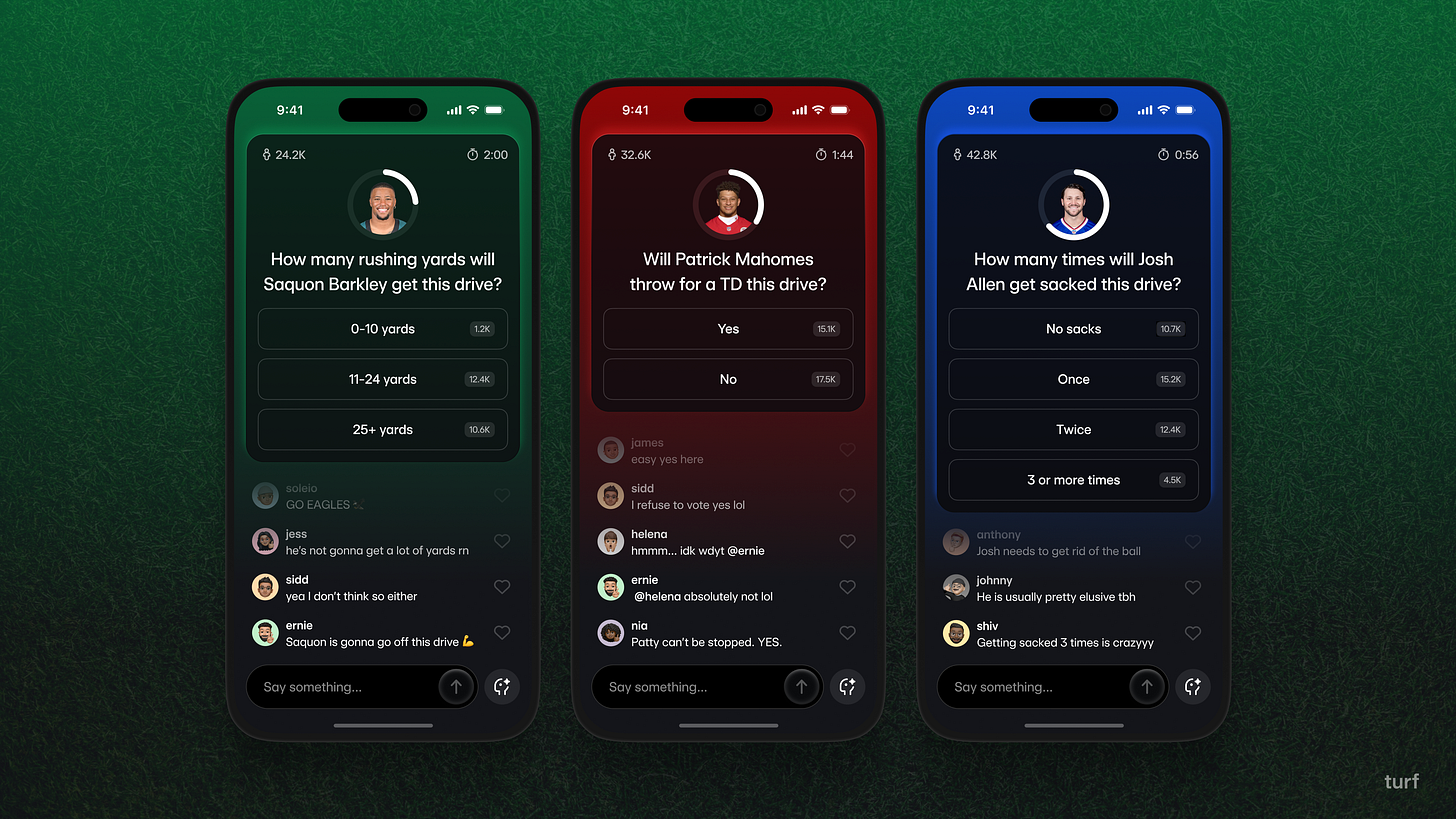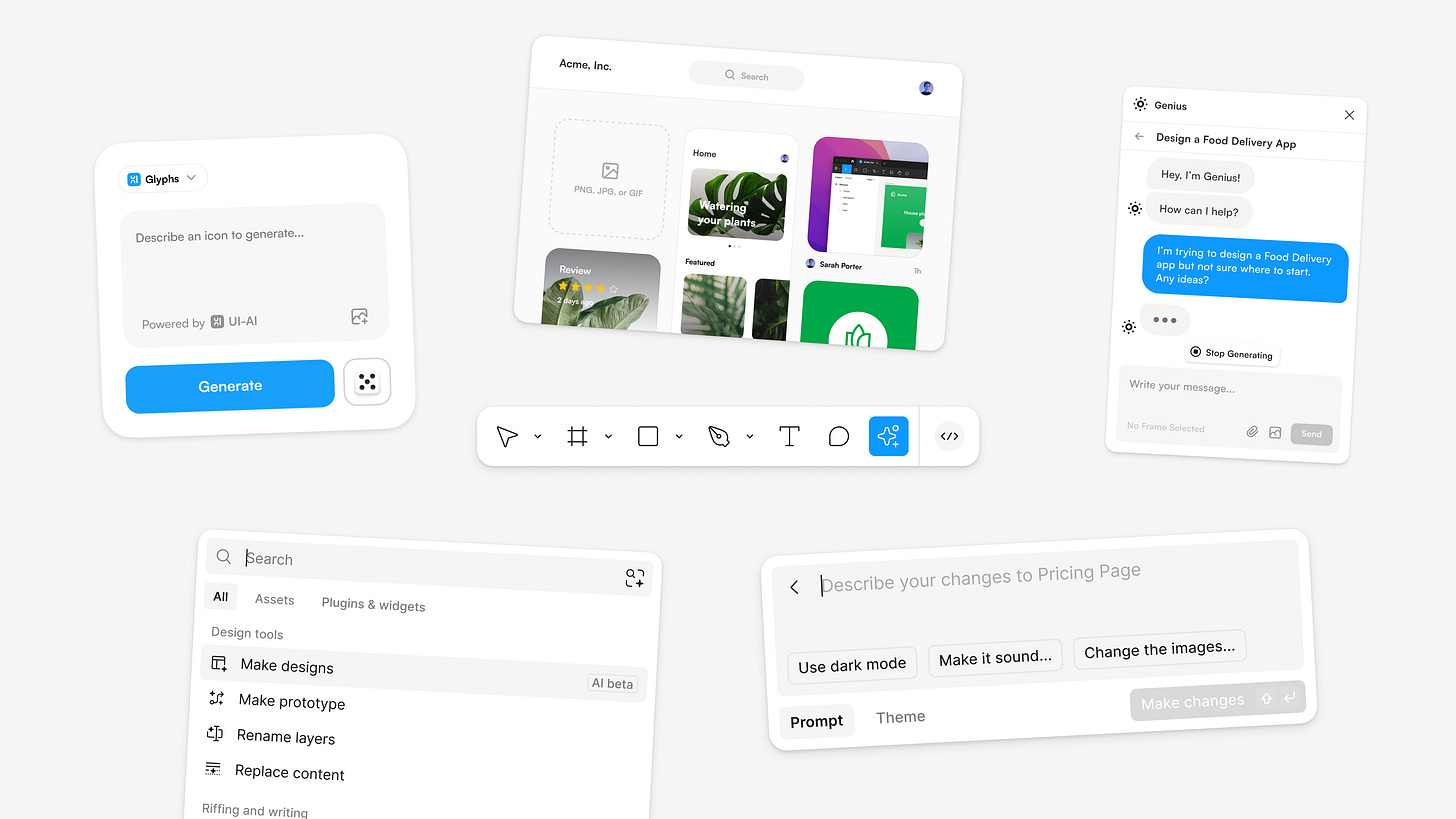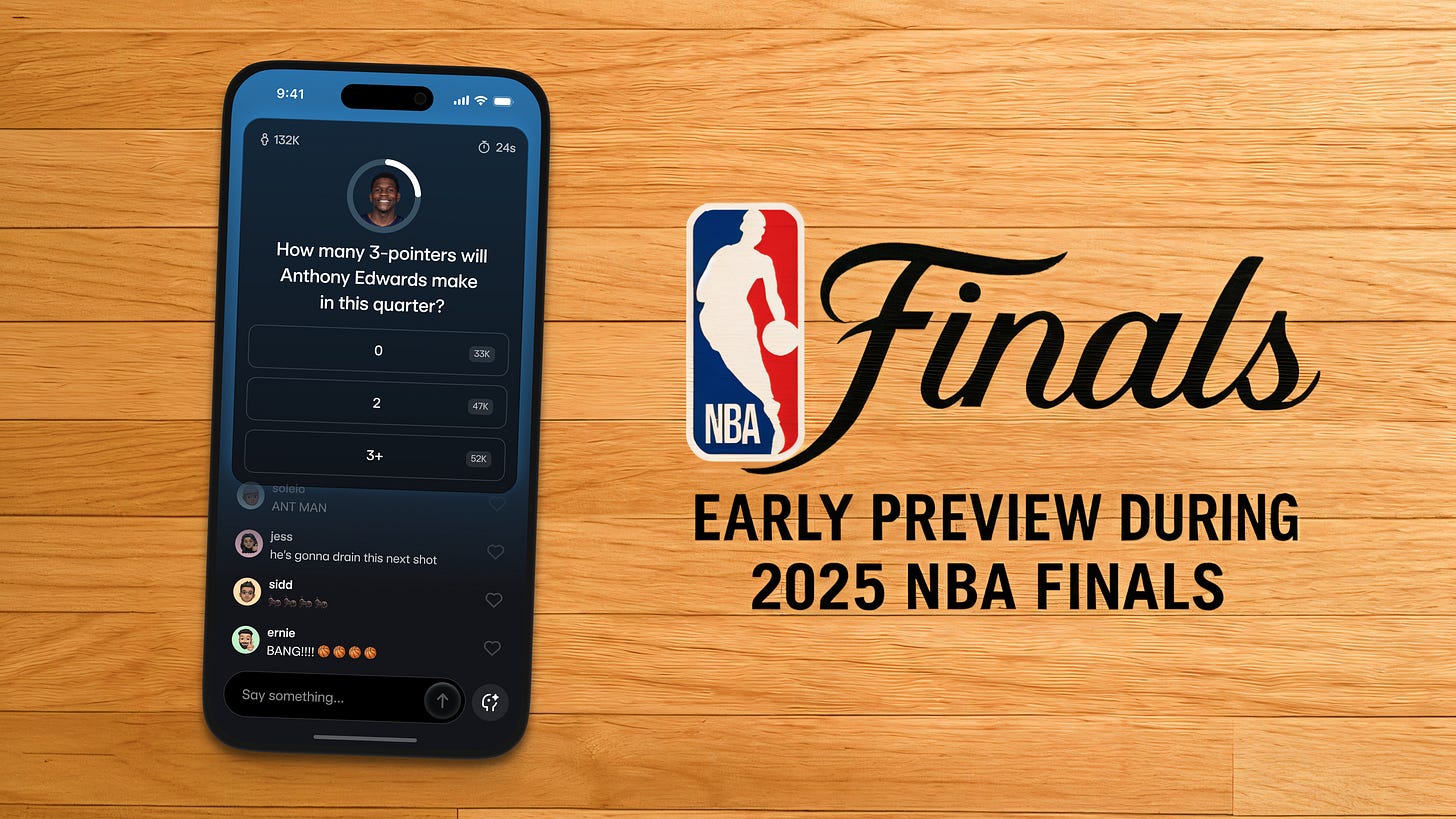Why I’m Building Turf
How I came across the idea for Turf, and why the world is ready for a new sports experience.
If you know me personally, you know I'm the biggest sports addict, 49ers, Warriors, Mighty Ducks, and my alma mater Arizona. If it involves a ball or a puck, I'm watching. Most of my friends will also tell you I’m a walking sports betting curse. Every time I back a team, especially one of MY TEAMS, they fold like a lawn chair. Lately, I’ve started emotionally hedging, putting money *against* the outcome I actually want, just to protect my heart a little. But it wasn’t always this way.
I was six when my family emigrated from India to the United States. My dad was making waves in computer networking, racking up patents and drawing attention from major tech companies. For him, it was an exciting opportunity; for me, it felt like my entire world was uprooted. Leaving behind friends, family, and everything familiar, I struggled to adapt. The language barrier isolated me at school, and home became my only comfort zone. My parents were my companions, and our shared solace came from endlessly watching Bollywood movies to ease the homesickness.
Discovering My Passion for Sports
A few months after we moved to the U.S., my dad took me to a Mighty Ducks game at Arrowhead Pond. I still remember the chill of the ice, the blast of the goal horn, and how the entire arena roared like one giant heartbeat. The Ducks won 4–3, but that wasn’t the part that stuck with me. It was the feeling of being surrounded by strangers who somehow felt like friends. For the first time since moving, I felt like I belonged.
From that night on, sports became my language, and Paul Kariya my favorite player.
Expanding Fandom
At first, it was all hockey. But growing up in the Bay, I was always surrounded by Niners and Warriors fans. I felt like I’d missed the memo, everyone spoke fluent football, and I barely knew the rules. I tried to keep up, but it never clicked. That changed in college.
Living next to Arizona Stadium, I’d hear the crowd erupt before I even saw the play on TV. That real-time energy pulled me in. It made me want to understand the game, not just watch it. Around that time, the 49ers went on a Super Bowl run, and suddenly I was in. Doomed, but in.
Basketball followed soon after. I went to a college game, became an Arizona fan (which came with its own trauma), and then got hooked on the NBA. Kevin Durant and Steph Curry became my guys, KD especially. Skinny, overlooked, always chasing greatness but rarely celebrated as the best. I saw parts of myself in him. And yeah, I probably fit the bill as a bandwagon fan, but only because I showed up late.
Learning the Hard Way
As I got more into sports, I started realizing how hard they are to actually follow if you didn’t grow up in it. I had a million questions but didn’t want to annoy my friends or slow things down. Luckily I had patient roommates, but most people don’t get that luxury. There was no tool, no assistant, no system that helped you catch up without feeling behind.
Then came fantasy football. It became my way in. I loved the stats, the tinkering, the trash talk. It gave me a way to prove I belonged. But no matter how much you studied, luck always had a seat at the table. I’ve won leagues back-to-back, and finished dead last in others. It taught me that data doesn’t kill the magic—it makes the chaos even more fun.
Looking back, all of that shaped what Turf would become. It’s the tool I wish I had: a way to learn sports by playing, to be part of the moment even if you’re new, and to tap into the joy, debate, and randomness that make sports unforgettable. Turf is for anyone who’s ever wanted to join the conversation but didn’t know how.
This is how it starts.
What's Broken Today
Today, I see clearly that our approach to experiencing sports is fundamentally flawed. Sports should unite us, yet our interactions have become fragmented across group chats, Instagram DMs, and TikTok comments, creating isolated experiences disconnected from the shared thrill of live sports. Traditional betting apps exacerbate this fragmentation by transforming dynamic, communal excitement into static, solitary interactions. These platforms cater almost exclusively to hardcore bettors with complex odds and intimidating interfaces that alienate casual fans.
Sports are inherently social, yet these isolated experiences misalign with how fans genuinely engage, live, together, and passionately.
The Opportunity
I believe we're on the brink of a transformative era, driven by two powerful innovations, AI and Prediction Markets. AI has reshaped our interaction with information and continues evolving towards general intelligence, promising profound impacts across multiple sectors. Meanwhile, Prediction Markets are emerging as powerful collective wisdom engines, vividly demonstrated during recent elections. Kalshi calls them "truth engines," but to me, they're also "emotion engines," reflecting our passion and gut instincts.
What I Learned from Building with AI
My experiences at Vercel, Diagram, and Figma taught me valuable lessons about leveraging Large Language Models (LLMs). Using LLMs for deterministic outputs is possible but requires intricate engineering and fine-tuning, alongside extensive evals to steer the outputs. However, LLMs excel naturally at predicting "X" tokens, anticipating likely outcomes from given contexts. Like quite literally LLMs are built to predict the likelihood of the next token. This strength aligns perfectly with the purpose of prediction markets, especially within the dynamic realm of sports.
Combining AI and prediction markets creates a powerful synergy ideal for revolutionizing sports engagement. AI provides immediate, contextual insights, while prediction markets channel collective passion and wisdom in real-time, reshaping how we experience and interact with sports.
Why Design Matters
These same experiences also taught me the importance of design—something that’s often overlooked in sports apps. When I was first trying to learn football and basketball, I found it genuinely difficult to catch up. There were so many fragmented sources of information and no single place to understand what was going on or why it mattered. As an early user of dozens of products trying to make sense of the game, I felt this gap firsthand. One of my favorite design quotes:
“Perfection is achieved not when there is nothing more to add, but when there is nothing left to take away.” - Antoine de Saint-Exupéry
Design, at its best, simplifies complexity. I’m fortunate to have learned this lesson by collaborating with two of the best designers in the industry, Marco and Jordan. At Figma and Vercel, I also saw firsthand that great design isn't about dumping all the data on a screen, it's about showing the next most useful thing at the right moment, paired with tasteful interactions. These learnings drive how I think about Turf. Sports apps need to evolve from static boxscores to dynamic, yet simple contextual experiences that adapt to the user, what they know, what they care about, and what they’re trying to do in the moment.
Why Turf
That conviction is what led me to build Turf—to recreate the electric, communal energy I first felt at that Ducks game. Turf brings casual fans and diehards into the same space, like a jumbotron in your pocket—an interactive, real-time sports experience powered by AI and the shared thrill of prediction.
We’re testing our first product, Turf Live, in early alpha during the NBA Finals. It’s built for the high-stakes, real-time moments letting you predict plays as they happen, compete with friends and fans, and get live insights from our AI assistant. It’s just the beginning.
Turf Live is chapter one. Over time, Turf will expand into a full suite of products pregame tools, smarter research, postgame debates, even fan-powered marketplaces. We’re building the fan layer for live sports.
Turf isn’t a betting app. It’s a social layer for how modern fans actually watch: live, together, and fully locked in.
Join the Journey
If you’re excited about the next generation of sports engagement, I invite you to join our waitlist, or reach out to me directly, My DMs are open.
Turf isn't merely a product to me, it’s deeply personal. It represents my personal life journey from isolation to belonging, from confusion to clarity, from passive viewing to active participation.


